Ma al-Ainin, "king of the desert". How the French conquered the Sahara
If Kaye and Pane were travelers, ethnographers and geographers, then French officer Louis Leon César Federb engaged in the study of Mauritania, guided by practical considerations.
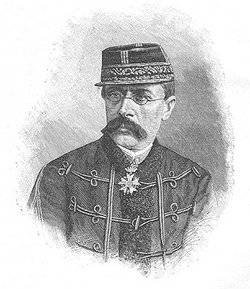 By the second half of the XIX century, France was firmly entrenched on the Senegalese coast, French trading posts were established on the Senegal River. However, both the local black population and the French colonists suffered from the constant raids of militant Arab-Berber tribes from the territory of Mauritania. Federb, who served as governor of St. Louis, formed from the Senegalese Negroes detachments of camel cavalry, trained in the desert, and began to send them to the lands of the Moorish emirates of Trarz and Brackne for retaliatory raids. In the end, the Moorish emirs in 1858 were forced to sign an agreement not to attack the French possessions in Senegal. But these agreements, although reflected in the position of Senegal, did not guarantee the safety of the French traders and travelers in the Mauritanian Emirates themselves. The huge desert territories, along which detachments of the “desert people” - nomads from the tribal confederations of the Moors - moved, remained “terra incognita” for Europeans. The few brave souls who dared to penetrate into the Mauritanian Emirates, risked their lives.
By the second half of the XIX century, France was firmly entrenched on the Senegalese coast, French trading posts were established on the Senegal River. However, both the local black population and the French colonists suffered from the constant raids of militant Arab-Berber tribes from the territory of Mauritania. Federb, who served as governor of St. Louis, formed from the Senegalese Negroes detachments of camel cavalry, trained in the desert, and began to send them to the lands of the Moorish emirates of Trarz and Brackne for retaliatory raids. In the end, the Moorish emirs in 1858 were forced to sign an agreement not to attack the French possessions in Senegal. But these agreements, although reflected in the position of Senegal, did not guarantee the safety of the French traders and travelers in the Mauritanian Emirates themselves. The huge desert territories, along which detachments of the “desert people” - nomads from the tribal confederations of the Moors - moved, remained “terra incognita” for Europeans. The few brave souls who dared to penetrate into the Mauritanian Emirates, risked their lives. At the end of the XIX century, France finally established itself in Senegal, and Dakar became the administrative center of the new colony - French West Africa. The conquest of the Mauritanian emirates in the plans of Paris was not included - the French leadership was convinced that there was nothing to "profit" in a deserted country. And the French public would not understand that the country would be involved in another war. But at the turn of the XIX - XX centuries. France attracted the attention of rich Morocco. It became clear to the French political and military leadership that the conquest of Morocco is impossible without prior "pacification" of the Mauritanian Emirates. But the French did not want to subjugate Mauritania by military means. For some time, the French authorities of West Africa adopted the concept of peaceful penetration into Mauritania, authored by Xavier Coppolani (1866-1905) - an amazing person, officer, diplomat and scientist. By origin, the lieutenant of the French Army Coppolani was a Corsican, but from childhood he lived with his parents in Algeria. This predetermined his interests. Although he was in the French colonial service, this did not prevent him from becoming a first-class scholar and making brilliant work on stories North African Muslim brotherhoods - "tariqov."
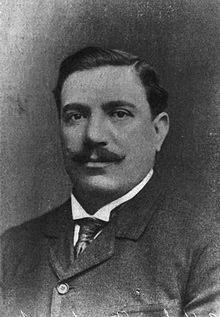 The essence of the “peacekeeping concept” proposed by Coppolani was to assert French influence in North Africa through the tribal sheikhs themselves. The main thing, as Coppolani believed, was to convince the sheikhs that the French were not going to change the original order, after which the sheikhs themselves would ensure the loyalty of the rest of the native population. But the trust of the sheikhs can be achieved only with the knowledge of the realities of local life, the Arabic language and traditions. The concept of Coppolani, who was a decisive opponent of the use of violent methods of conquering the North African territories, at that time perfectly served the interests of the French leadership, and therefore was adopted as the basis of French policy in the Sahara region. Xavier Coppolani himself was appointed French charge d'affaires in Mauritania. In 1902, Mr. Coppolani went to Mauritania, where he met with a number of reputable Muslim sheikhs and Hassans (Mauritanian society has two top groups — the Hassan aristocrats and the Marabutose clergy). He managed to convince the Mauritanian leaders of the advantages they would receive if a French protectorate was established. In the end, the emirs of Trarza and the Brahns agreed to the patronage of France. French military posts were established on their territory, and Coppolani himself was appointed government commissioner in Mauritania.
The essence of the “peacekeeping concept” proposed by Coppolani was to assert French influence in North Africa through the tribal sheikhs themselves. The main thing, as Coppolani believed, was to convince the sheikhs that the French were not going to change the original order, after which the sheikhs themselves would ensure the loyalty of the rest of the native population. But the trust of the sheikhs can be achieved only with the knowledge of the realities of local life, the Arabic language and traditions. The concept of Coppolani, who was a decisive opponent of the use of violent methods of conquering the North African territories, at that time perfectly served the interests of the French leadership, and therefore was adopted as the basis of French policy in the Sahara region. Xavier Coppolani himself was appointed French charge d'affaires in Mauritania. In 1902, Mr. Coppolani went to Mauritania, where he met with a number of reputable Muslim sheikhs and Hassans (Mauritanian society has two top groups — the Hassan aristocrats and the Marabutose clergy). He managed to convince the Mauritanian leaders of the advantages they would receive if a French protectorate was established. In the end, the emirs of Trarza and the Brahns agreed to the patronage of France. French military posts were established on their territory, and Coppolani himself was appointed government commissioner in Mauritania. But the subordination to the French patronage of the South-Mauritanian Emirates of Trarz and Brakna did not suit the ambitious Coppolani. He "swung" at the most closed for contacts Adrar - the inner regions of Mauritania, inhabited by tribes hostile to Europeans. It was Adrar that was the center of Moorish culture, here was the famous oasis of Shingetti, which in the Middle Ages, during the domination of the powerful Almoravid dynasty, became the religious center of the entire western part of the Sahara and then gave way to the larger Malian city of Timbuktu. Sheikhs Adrar were considered the most rigid supporters of preserving the traditional way of life and were extremely negatively disposed towards the penetration of Europeans into the country. Nevertheless, Xavier Coppolani hoped that the militant Adrar would be able to "pacify". In January, 1905 headed a detachment of three hundred French soldiers and warriors provided by the emirs of Trarza and Bracna, Xavier Coppolani went to Adrar. However, one evening the nomad camp attacked the expedition camp. Coppolani was mortally wounded and died a few hours later.
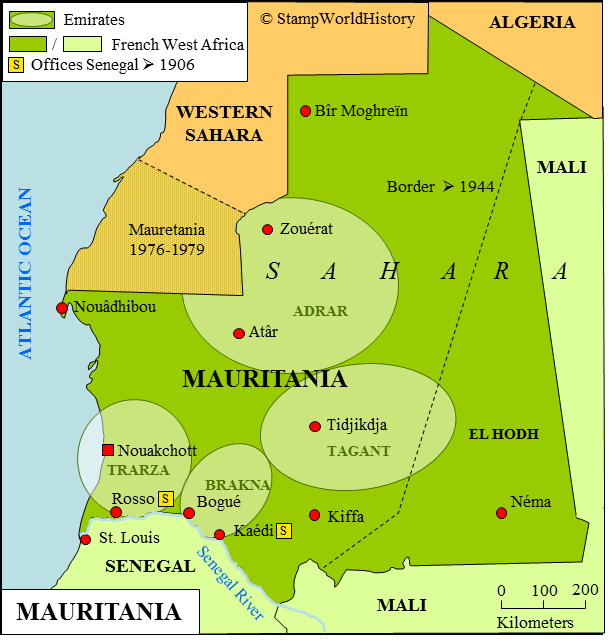
As it turned out, behind an attack on the Coppolani expedition was Sheikh Ma al-Aynin (1831-1910). His full name sounded Muhammad Mustafa Ould Sheikh Muhammad Fadil bin Mamin al-Kalkami. He was the son of Sheikh Muhammad al-Fadil - the founder of the religious brotherhood of Fadilia, who enjoyed great influence among the nomadic tribes of Western Sahara, Mauritania and Morocco. In 1860, Ma al-Ainin headed his own Ainiya brotherhood, created on the basis of one of the branches of the Fadilia brotherhood. For a long time he lived in Algeria, then in 1887, he received the position of Qaida from the Sultan of Morocco. Ma al-Ainin was a man, as they would say now, of the “old formation”. He resembled medieval sheikhs — spiritual leaders, who often led powerful popular movements in the Sahara and Sahel regions. With him, Ma al-Ainin carried a chest with ancient manuscripts, and he wrote the authorship of a number of religious treatises.
During his many travels, Ma al-Ainin gained more and more prestige among the nomads of Southern Morocco, Western Sahara and Mauritania. He enlisted the support of the Moroccan sultan Moulay Abd al-Aziz, who in 1897 allowed Ma al-Ainin to open the convent (centers) of his Ainiy brotherhood in Morocco’s largest cities, Fez and Marrakesh. Then Sultan of Morocco entrusted Ma al-Ainin with the task of leading construction in the Sahara, in the region of Segiat al-Hamra, the city of Smara, which was to include a fortress, mosques and a large market. Smara became one of the most successful projects of the Saharan town planning, soon after its creation it turned into a large commercial and cultural center of the region. In addition to the general management, Ma al-Aynin himself headed the religious school established in Smara with a library.
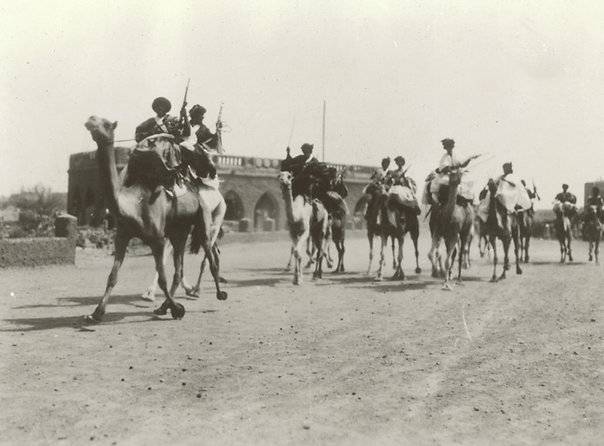
Unlike the emirs of South Mauritania, Ma al-Ainin remained a consistent opponent of French penetration into the Sahara and any European influence in the region. Smara, where Ma al-Ainin settled, became the stronghold of the anti-colonial resistance of the peoples of the Sahara. Sheikh called on Saharan tribes to put aside all internal contradictions and unite for jihad against the French and Spanish colonialists (by this time, Spain also asserted its influence in the Western Sahara). Gradually, Ma al-Ainin and his ideas of confronting European expansion gained enormous influence among the heterogeneous mass of the population living between Senegal and southern Morocco. Great support for Ma al-Ainin was provided by Morocco. In fact, the conflict in Adrar between Ma al-Aynin and the French was the conflict between Morocco and France.
Despite his age, and Ma al-Ainin at the time of the intensification of the armed confrontation with the French, was already over seventy, he personally led the guerrilla war against the French colonial forces. Nomad groups used tactics of lightning attacks on French military posts. During one of these attacks, Xavier Coppolani was killed, in which Ma al-Ainin saw a great danger - after all, Coppolani was one of the few French soldiers who could not only fight, but also negotiate with the sheikhs of the tribes.
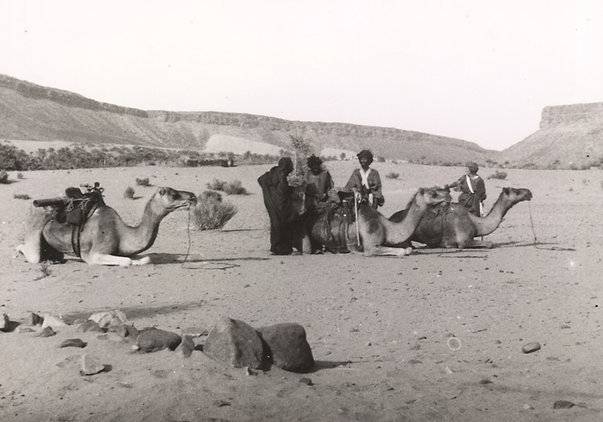
Ma al-Ainin relied on the support of the regeybat tribal confederation, which roamed the vast Sahara from Morocco to Mali and Senegal. Regatebat won the tribal wars with the tribes of the Ulad Gaylan (1899-1904) and Awlad Jerier (1897-1909), as a result of which they established control over the territory of Adrar. Then the regeybat was subjugated and the tribe ulad-bu-sbaa. Thus, Ma al-Ainin became the main and most dangerous enemy of the French colonial expansion in Western Sahara. For a long time, he enjoyed the full support of the Moroccan Sultan Moulay Abd al-Aziz, but then the French leadership still forced the Sultan to stop helping Ma al-Ainin. Then the “king of the desert” responded to the “betrayal” of Moulay Abd al-Aziz in his own way - he supported his rival in the struggle for the sultan's throne, Abd al-Hafid - the brother of the sultan, who had long claimed the Moroccan throne. But then relations between Khafid and al-Aynin deteriorated. In the end, Ma al-Aynin himself declared himself a sultan and declared jihad to the French in southern Morocco.
In 1907, French Colonel Henri Joseph Gourot received an order to pacify Adrar. But it was not until January that 1909, under the command of Gouraud (pictured), French colonial troops marched inland. They included camel cavalry units recruited from representatives of local tribes and trained by French officers. The war was very cruel. The French troops chose the tactics of capturing the sources on which the nomads brought their flocks to drink.
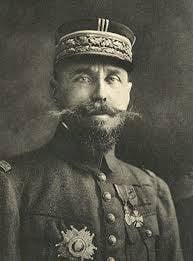 At the same time, herds were also captured, which were in fact the only wealth of the Saharan nomads. In conditions when herds and springs were in the hands of the French, nomads had no choice but to surrender to the nomads. Finally, the whole of Adrar was occupied by French troops. French military posts were established in Adrar and Shingetti, and the forces of Ma al-Aynin had to retreat to the north - to the Segyat el-Hamra region. Then the sheikh, with the remnants of his supporters, marched on Fez, but was defeated by French troops, who moved across the path to the nomads.
At the same time, herds were also captured, which were in fact the only wealth of the Saharan nomads. In conditions when herds and springs were in the hands of the French, nomads had no choice but to surrender to the nomads. Finally, the whole of Adrar was occupied by French troops. French military posts were established in Adrar and Shingetti, and the forces of Ma al-Aynin had to retreat to the north - to the Segyat el-Hamra region. Then the sheikh, with the remnants of his supporters, marched on Fez, but was defeated by French troops, who moved across the path to the nomads. In 1910, during a retreat in the Tiznit area, 79-year-old Ma al-Ainin passed away. For the French colonial authorities, the death of an elderly sheikh was a real gift - the Western Saharan and Moorish nomads no longer had such charismatic leaders as Ma al-Aynin. After his death, the struggle of the nomads regeibat against the French authorities was headed by the son of Ma al-Aynin al-Hib, who also proclaimed himself the Sultan of Morocco. But the French managed to enlist the support of the Berber tribes Mtuga, Gandavi and Glauya, after which they defeated the forces of al-Hiba and drove them out of Marrakesh. Then, in 1912, al-Hiba’s troops were driven back from the Taroudant area. A French protectorate was established over Morocco. Colonel Henri Joseph Gouraud, who rose in 1911 during the war in Morocco, before generals chases, already after World War I, became famous as French High Commissioner in Syria.
In 1920, Mauritania became a French colony within French West Africa. The colony was administered by the Governor-General appointed by the French government. But the French authorities did not abolish the traditional institutions of government - sheikhs and emirs. Only in the 1932-1934 years, after the regular popular uprisings, which were headed by local feudal lords, did the French authorities decide to liquidate the Admiral and Brakna emirates. However, among other French colonies, Mauritania occupied a special place. Here, in fact, French laws did not operate, the traditional social structure, including slavery, remained in an unshakable state, which in fact remains in this African country to this day. The number of Europeans - soldiers, officials and merchants - who lived in this closed Saharan country was also very small. In modern Mauritania, as well as among the rebels of the Frente Polisario, which stands for the political independence of Western Sahara, Ma al-Aynin is considered a national hero.
Information